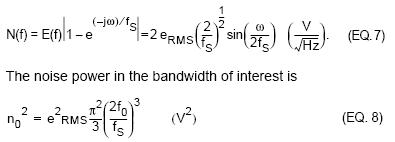Fractional-N
Full Member level 1

first order noise shaping
Hi,
please help me understand the concept of noise shaping
1- What is noise shaping?
2- What is first-order noise shaping?
3- What is the difference between first-order noise shaping and second-order or third-order ... noise shaping?
4- Can anyone describe noise shaping in time domain?
Thank you
Hi,
please help me understand the concept of noise shaping
1- What is noise shaping?
2- What is first-order noise shaping?
3- What is the difference between first-order noise shaping and second-order or third-order ... noise shaping?
4- Can anyone describe noise shaping in time domain?
Thank you





